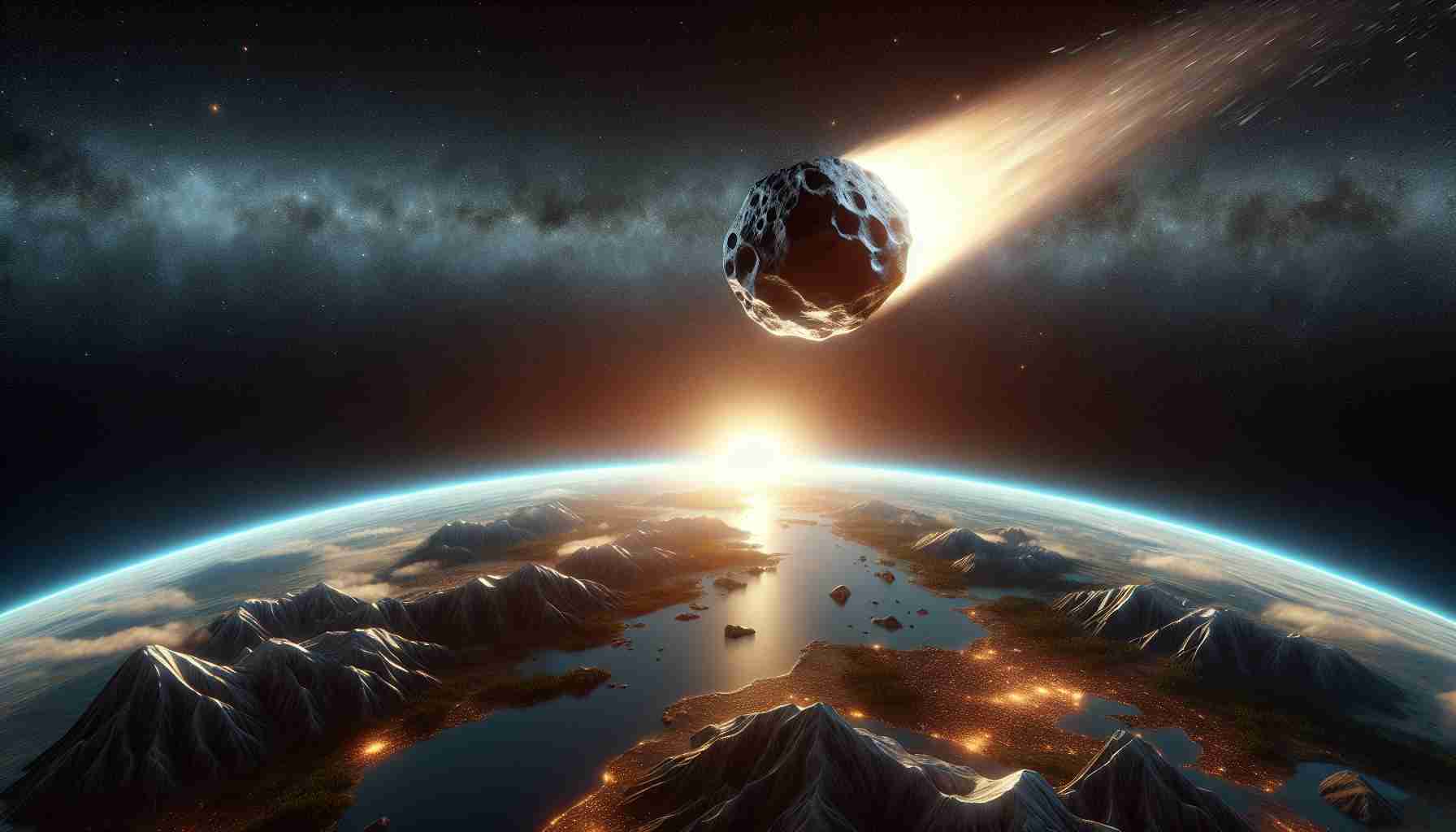- Asteroid 2024 YR4 poses a 2.3% chance of colliding with Earth by December 22, 2032.
- The asteroid’s size ranges from 40 to 100 meters, with potential to cause significant destruction.
- The scientific community emphasizes the urgent need for data, as visibility will be lost until 2028.
- The United Nations is activating planetary defense protocols in response to the threat.
- This situation echoes past events, like the 1908 Tunguska incident, highlighting real risks from asteroids.
- While Spain is not in the impact zone, the Canary Islands may experience indirect effects.
- Experts advise staying informed as collision probabilities may decrease over time.
The cosmic threat of a meteorite collision with Earth is escalating, and scientists from the European Space Agency (ESA) and NASA are racing against time to gather crucial data. As December 22, 2032, approaches, the chances of a collision with asteroid 2024 YR4 have risen to 2.3%—a notable increase that has captured the attention of space agencies worldwide.
This celestial giant, measuring between 40 and 100 meters across—slightly larger than a soccer field—poses a grave risk: its impact could level major cities like Madrid, London, or Paris. The scientific community is buzzing with urgency, especially since the asteroid will vanish from our view until 2028. Only then will we have clearer insights into its trajectory and potential threat.
In an unprecedented move, the United Nations is reportedly activating its planetary defense protocols. According to experts, while this scenario seems straight out of a sci-fi film, it underscores a very real danger akin to the historic Tunguska event in 1908, where a similar-sized asteroid devastated Siberia.
While Spain stands outside the predicted impact zone, the Canary Islands could potentially feel the repercussions. Nevertheless, experts urge calm, noting that as we approach the date, collision probabilities typically decrease.
The message is clear: Stay informed, stay vigilant, and remember that knowledge is our best defense against the unknown!
The Clock is Ticking: Are We Prepared for a Meteorite Collision?
The Cosmic Threat of Asteroid 2024 YR4
The potential threat from asteroid 2024 YR4 has recently gained significant attention as scientific investigations reveal a rising probability of collision with Earth by December 22, 2032. With an estimated chance of 2.3%, agencies such as the European Space Agency (ESA) and NASA are mobilizing to mitigate this threat. Measuring between 40 and 100 meters in diameter, the asteroid’s impact would have devastating consequences for large metropolitan areas.
# Key Concerns and Developments
1. Planetary Defense Activation: The United Nations has begun implementing planetary defense protocols, signifying the seriousness of the threat.
2. Visibility: The asteroid will not be in view until 2028, which limits current tracking and trajectory analysis.
3. Public Vigilance: Experts emphasize the importance of public awareness and preparedness as foundational to addressing this potential catastrophe.
Important Questions
1. What are the potential consequences of an asteroid impact?
The impact of 2024 YR4 could unleash energy equivalent to thousands of atomic bombs, leading to widespread destruction in major cities. This could result in the loss of thousands of lives, massive economic damages, and long-lasting environmental impacts, such as climate changes caused by dust clouds blocking sunlight.
2. How can scientists track and predict asteroid trajectories?
Astronomers use telescopes and radar technology to track the position of asteroids and predict their orbits with greater accuracy. Computational models analyze gravitational interactions with other celestial bodies, allowing scientists to refine their predictions as new data becomes available.
3. What defensive measures are available if an asteroid is on a collision course with Earth?
Several strategies have been proposed, including kinetic impactors (which would collide with the asteroid to change its course), nuclear deflection techniques, and precision gravity tractors (spacecraft that use their gravitational pull to alter an asteroid’s trajectory). Continuous monitoring and timely communication are essential for any potential intervention.
Key Insights and Trends in Planetary Defense
– Increased Funding: Governments and agencies are likely to increase funding for asteroid detection and deflection technology in light of rising awareness of cosmic threats.
– Global Collaboration: International partnerships are essential for sharing data and strategies to tackle potential cosmic threats, enhancing global readiness.
– Technological Innovations: Advancements in aerospace technology and artificial intelligence are improving real-time tracking and prediction capabilities for near-Earth objects.
Suggestions for Further Reading
For those interested in learning more about planetary defense and asteroid tracking, check out these resources:
NASA
European Space Agency
United Nations
Stay informed and vigilant as we approach the critical date, embodying the spirit of preparedness and scientific inquiry!
